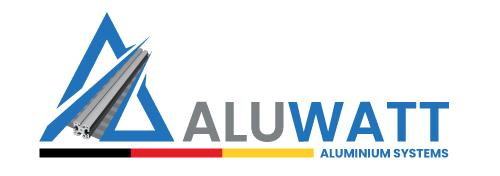Aluminum profiles are preferred materials in many industrial and commercial applications due to their lightweight, durability, and versatile usage features. In this article, we will examine the common applications of aluminum profiles and the advantages they offer.
1. Construction and Architectural Applications:
Aluminum profiles are commonly used in the construction and architectural sector. They provide high durability and aesthetic appeal in applications such as windows, doors, facade cladding systems, and roof structures. Their lightweight also offers advantages in transportation and installation.
2. Automotive Industry:
In the automotive industry, aluminum profiles are used to lighten vehicles. This leads to improved fuel efficiency and reduced emissions. Aluminum profiles are employed in chassis, frames, and various engine components.
3. Electronics and Telecommunications:
The high thermal conductivity of aluminum makes it ideal for cooling systems in electronic devices. Additionally, it is used in the telecommunications sector for antennas, base stations, and various infrastructure components.
4. Transport and Logistics:
Lightweight and durable aluminum profiles also play a crucial role in the transport and logistics sector. They are used in truck bodies, trailers, and various transport equipment to enhance load capacity and reduce fuel consumption.
5. Möbel- und Innenarchitektur:
Aluminiumprofile werden auch in der Möbel- und Innenarchitektur verwendet, um moderne und elegante Designs zu schaffen. Sie finden Anwendung in Regalsystemen, Bürozonen, Tisch- und Stuhlgestellen und bieten sowohl Haltbarkeit als auch ästhetisches Erscheinungsbild.
1. Lightweight and Durability:
Aluminum profiles are highly durable despite their lightweight. This property increases the load-bearing capacity of structures and products while reducing material costs and energy consumption.
2. Corrosion Resistance:
Aluminum forms a natural oxide layer that provides corrosion resistance. This property ensures long-lasting performance in outdoor applications and challenging environmental conditions.
3. Aesthetics and Design Flexibility:
Aluminum profiles are easily shaped and can be adapted to various design requirements. With their sleek surfaces and a range of coating options, they enable modern and appealing designs.
4. Recycling and Environmental Friendliness:
Aluminum is 100% recyclable and maintains its quality during the recycling process, saving energy. Therefore, it is favored as a sustainable building material in eco-friendly projects.
5. Cost-Effectiveness:
The lightweight nature of aluminum profiles reduces transportation and installation costs. Additionally, their durability and robustness lower maintenance and repair expenses.
Conclusion
Aluminum profiles have become an indispensable material due to the advantages they offer across various industries and applications. Their lightweight, durability, aesthetic appeal, and eco-friendly properties make them a fundamental component of modern buildings and products. Leverage the benefits of aluminum profiles in your projects to achieve more efficient, aesthetically pleasing, and sustainable solutions.




